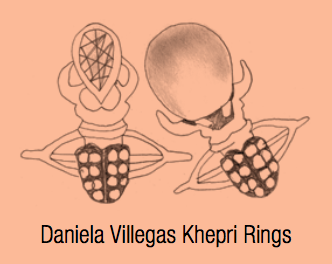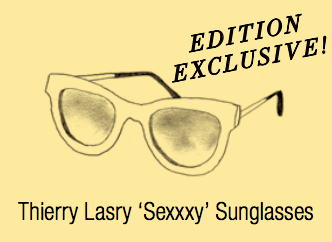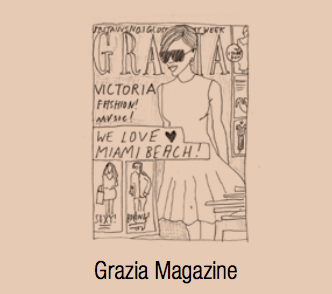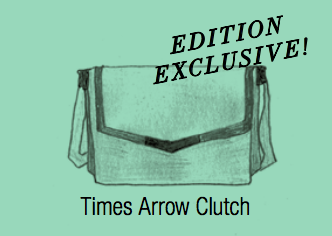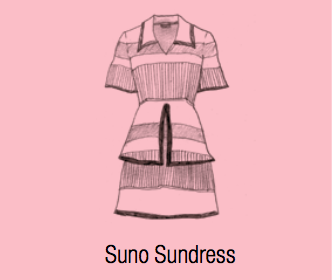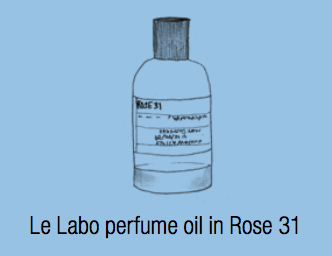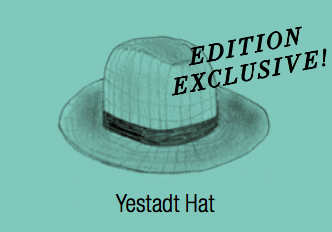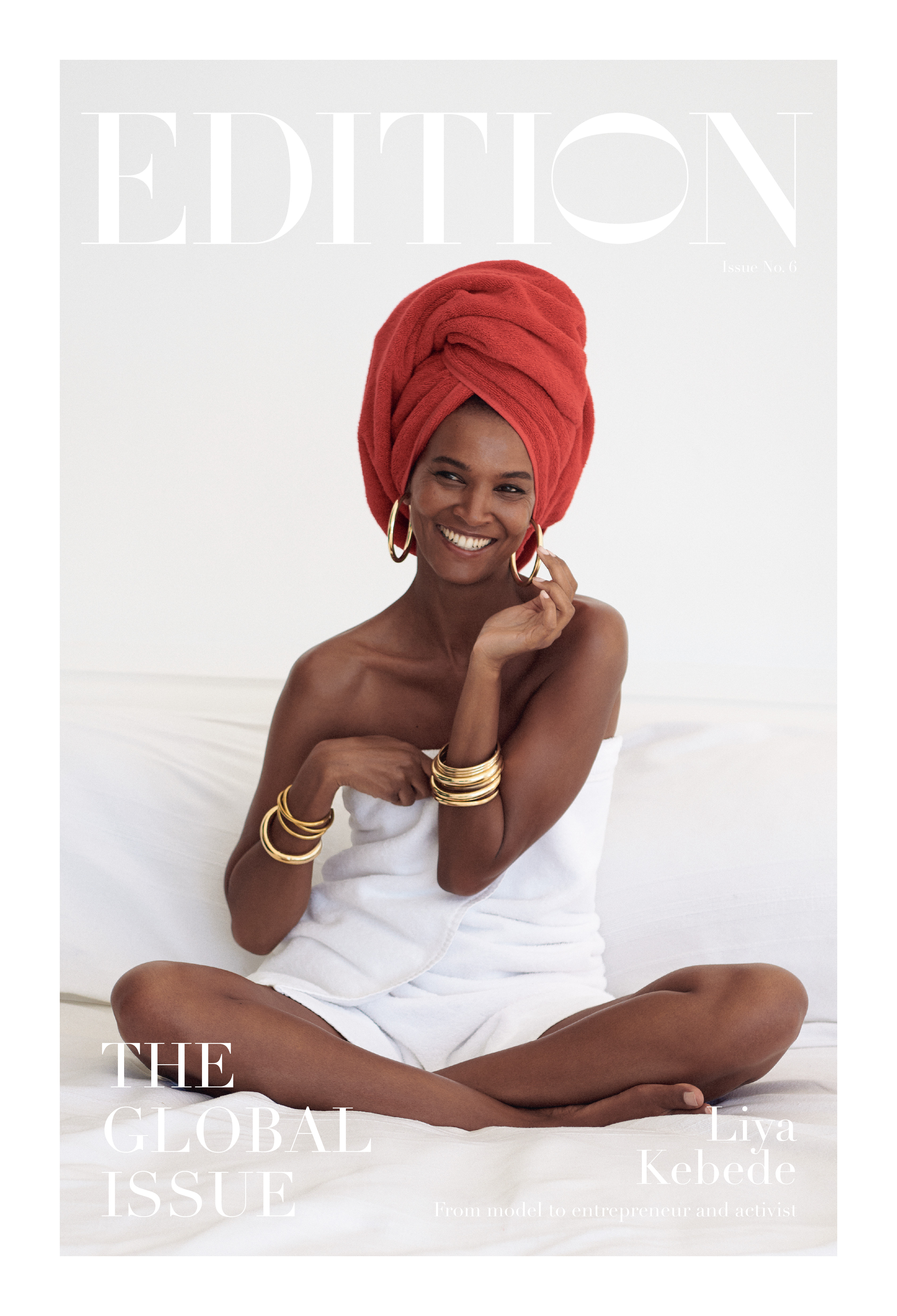
Global Issue
Global Issue: Editor’s Letter
Editor’s Letter
John Fraser
The Michelin-starred chef has a story to tell you through his cooking
Pundy’s Picks for Conscious Travel
Six tips for considered and conscious travel
Genmaicha Martini Recipe
The classic martini plus the health benefits of green tea
The Spread Love Project by Nicholas Konert
How Nicholas Konert’s rainbow heart design became an international icon
Wade Davis
Anthropology is the antidote to today’s nativism says the scholar and author
Carla Sozzani
The future of retail according to the founder of legendary concept store 10 Corso Como
The Art of Migration
The power of art to inspire empathy and social action
John Pawson
Zen Buddhism and minimalist purity drive the celebrated architect
Amy Duncan
As the CBD line Mowellens expands into skincare, its founder shares the personal story behind her company
Sila Sveta
Moscow’s favorite media studio finds the perfect balance between art and commerce
David de Rothschild
In his calls for environmental awareness, the modern explorer finds harmony between man and nature
Can Fashion Be Sustainable?
Shaping a better world through what you buy – or don’t
Brendon Babenzian
Supreme’s former creative director wants to end the cycle of consumption with his new brand Noah
Lily Kwong
Nature invades the urban jungle in the landscape designer’s expansive projects
House of Yes
Behind the scenes with the Bushwick nightlife collective promoting inclusivity and consent culture
Vivie-Ann Bakos
DJ Extraordinaire
Chez Dede
A medium in which two world-traveling, adventurous spirits absorb the globe’s vast curiosities and share them freely
Jesse Israel
A meditation guide for extraordinarily large groups
Liya Kebede
The Ethopian model, activist, and entrepreneur uses her label Lemlem as a force for change

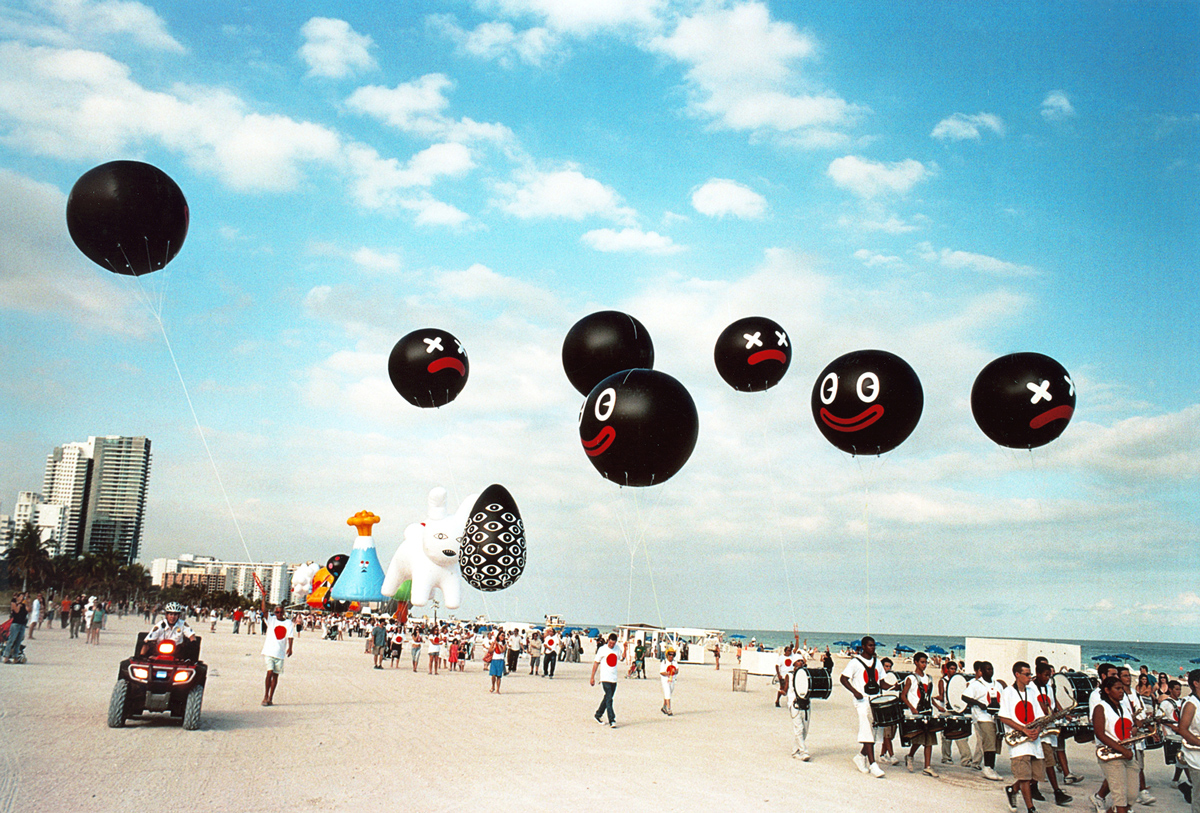
In the short time we’ve known Sam Borkson and Arturo Sandoval III, they’ve given us upwards of 100 hugs. It’s part and parcel with these two artists, who go by the sobriquet FriendsWithYou, whose art consists of Kawaii Characters and hyper- colorful immersive installations. At the very least their work brings joy, generates smiles, and induces hundreds of hugs.
In fact, they say they’re on a mission to propagate what they call “the happy virus,” an ecstatic, gleeful plague. But FriendsWithYou are not naïve, just because they make ebulliently simple toy-like sculptures and use primary hues. In fact, it’s in this simplicity that their genius lies: by using archetypes of human emotion and utilizing a mishmash of world religions, they elicit spiritual sensations in the viewer that are universal yet personal. This allows for scenes like a recent one at the Museum of Contemporary Art in Los Angeles, where they set up a bouncy house, and encouraged the simple act of “play,” a freeing, pure action that adults often forget to do.
Borkson and Sandoval met as ravers in the 90s Miami scene, and despite recently relocating to the West Coast, their connection to the city runs deep. Sandoval grew up in Miami, the son of legendary jazz trumpeter Arturo Sandoval, and since then, the two have established their art practice in a fertile community of young artists with a distinctly South Florida aesthetic. So we asked them what makes the Magic City so…magical.
The Beaches
Arturo Sandoval III: The beaches are the most magical. When you’re in Miami, you’re living inside the Caribbean, so you get the most beautiful water you can imagine. I like going to the beach when there’s a storm.
Sam Borkson: Every day I would go running, get super sweaty, and the ocean is your body temperature. When you bring your body temp up from running, then jump in, it feels like your body is dissolving into the water. The Pacific is cold; but in Miami, there’s no difference between you and the ocean.
Cuban Food
AS: Good Cuban food is tricky. There are many spots to avoid, which are the ones on the beach. You have to go to the mainland. You definitely want to get the pan con bistec [steak sandwich] at Enriqueta’s.
SB: Enriqueta’s is one of the best spots. Breakfast there will blow your mind.
AS: If you want to go to where the Cuban old school dudes go to aggregate, you go to Versailles.
SB: My favorite place is actually across the street from Versailles. It’s called La Carreta. Versailles is ashy and beautiful, while La Carreta is the dirty one. It’s the same owner as Versailles, but they do one thing better: lechón asado [grilled pork].
The Dirty South
SB: The Dirty South means that you can make whatever you want, hustle, get it built, make it happen, and break every law. It’s so gangster.
AS: You can talk to government people and be like, “Hey, c’mon buddy, you can give me a permit.”
Miamians
AS: Something that’s unique about the social dynamics is that it’s a very small town—it’s local, which is very nice. What’s unique about the people culturally is that it’s the only place you have a sampling of all the Hispanic cultures inside of an Anglo structure. There’s one of the biggest populations of Jews, Haitians, and all [other] immigrants, but it’s a very empowered Hispanic population, which you don’t get in other places in the country.
SB: Our artist friends support each other. That’s rare. Everything we did, everyone came to help us. There were no art critics, and while the institutions are amazing, there was only so much they could do. We didn’t depend on the galleries; we depended on the public. There’s such a community vibe in Miami.
The Humidity
AS: We [love] the humidity. When you grow up in it, and move away from it, you miss it.
SB: I love to sweat. That’s why you see me half of my existence with my shirt on. In Miami, if you’re our size, you’re sweaty all the time. Everybody is.
AS: And there’s so much precipitation. It’s so unique, especially in the summer with all those rain showers. It’s tropical rain.
SB: The rain is one of my favorite things. Everybody shares this from Miami. Every day in the summer, it rains a huge thunderstorm, but it’s not oppressive like the Northwest. It’s fast and fun. [And] it’s sexy! People have sex like crazy. You’re so hot; your blood is boiling. It’s more alive.
Art & Culture
The power of art to inspire empathy and social action
Zen Buddhism and minimalist purity drive the celebrated architect
Moscow’s favorite media studio finds the perfect balance between art and commerce
Behind the scenes with the Bushwick nightlife collective promoting inclusivity and consent culture
DJ Extraordinaire
A medium in which two world-traveling, adventurous spirits absorb the globe’s vast curiosities and share them freely
A meditation guide for extraordinarily large groups
Experiences
Moscow’s favorite media studio finds the perfect balance between art and commerce
In his calls for environmental awareness, the modern explorer finds harmony between man and nature
Behind the scenes with the Bushwick nightlife collective promoting inclusivity and consent culture
DJ Extraordinaire
Food & Drink
The Michelin-starred chef has a story to tell you through his cooking
Six tips for considered and conscious travel
Personalities
Style
The classic martini plus the health benefits of green tea
How Nicholas Konert’s rainbow heart design became an international icon
As the CBD line Mowellens expands into skincare, its founder shares the personal story behind her company
Nature invades the urban jungle in the landscape designer’s expansive projects
The Ethopian model, activist, and entrepreneur uses her label Lemlem as a force for change

